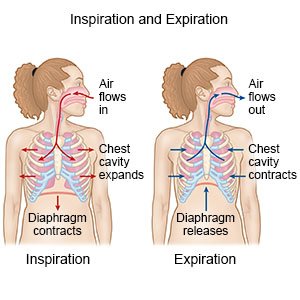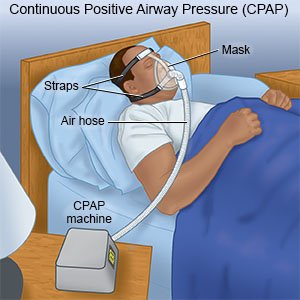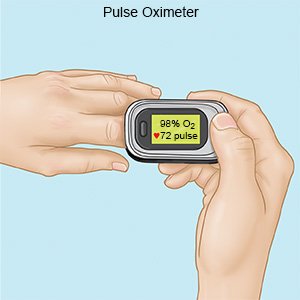High Flow Nasal Cannula
Medically reviewed by Drugs.com. Last updated on Aug 4, 2025.
AMBULATORY CARE:
High flow nasal cannula (HFNC)
is used to give oxygen at a high rate. The oxygen is delivered through small prongs that sit in the nostrils. The high flow rate makes breathing easier. The lungs do not have to work as hard to get air in and out. It also helps clear carbon dioxide from the airway.
 |
Call your local emergency number (911 in the US) if:
- You have chest pain.
Call your doctor if:
- You have more shortness of breath than usual.
- You have wheezing or other breathing problems, even when you are using oxygen.
- Your lips or fingernails look pale or blue.
- You feel confused or anxious.
- You have questions or concerns about your condition or care.
Related medications
Why HFNC may be needed:
- Helps premature newborns breathe. Premature babies are born earlier than 37 weeks, before certain parts of the body have fully formed. This can cause a condition called apnea of prematurity (AOP). AOP causes the baby to stop breathing for 15 to 20 seconds or to pause for several seconds. HFNC can help the baby breathe more regularly.
- Manages lung conditions in older children and adults. Conditions such as COPD, pneumonia, and respiratory failure can cause low blood oxygen levels. HFNC helps increase the oxygen level. It can also help thin mucus that may form in the lungs. This makes it easier to cough up or remove.
- Keeps the airway open during sleep. HFNC can be used to manage obstructive sleep apnea (OSA). OSA is usually treated with a continuous positive air pressure (CPAP) machine. A CPAP mask may be difficult to wear during sleep. HFNC does not use a mask, so it may be more comfortable than CPAP.

- Prevents breathing problems before and after a procedure or surgery. For example, breathing problems can develop during intubation. HFNC can keep oxygen at the right level while intubation tubes are being placed and removed.
Use oxygen safely:
- Do not use oxygen around heat or flame. Compressed oxygen can catch on fire. Keep a fire extinguisher and a phone close by in case of a fire.
- Keep the oxygen container 5 feet away from open flames or heaters, such as candles or hot water heaters.
- Do not use anything flammable near your oxygen. Examples are cleaning fluids, gasoline, and aerosol sprays.
- Do not smoke while you are using oxygen or let anyone smoke around you.
- Tell your fire department that you have oxygen in your home if you need to call them for help.
- Do not change the flow of your oxygen unless directed. Turn your oxygen container or concentrator off when you are not using your oxygen.
- Put oxygen use signs on all the doors of your house. The signs let visitors and emergency workers know that oxygen is in use. Tell your electric company that you have electrical medical equipment. They will put you on a priority list to fix your power quickly if it goes out.
- Follow instructions for use and maintenance of your oxygen equipment. Keep oxygen containers secured in an upright position. Oxygen containers may become damaged if they fall over. An oxygen container may cause serious injury if it breaks.
Use a pulse oximeter as directed:
A pulse oximeter is a device that measures the amount of oxygen in your blood. It also measures your heart rate. Your healthcare provider will show you how to use a pulse oximeter. He or she will tell you how often to check your oxygen level while you are using HFNC at home. The following are general directions:
- The pulse oximeter may be placed on your finger, toe, or earlobe. Light is passed from the device through your blood. The pulse oximeter calculates the percentage of blood that is carrying oxygen. At least 89% of your blood should be carrying oxygen.

- You will get the best measurements when your hand is warm, relaxed, and at the level of your heart. Make sure all nail polish is removed. Do not smoke, because your percentage will not be correct. Ask your healthcare provider what your percentage should be if you smoke. If you smoke, it is never too late to quit.
Follow up with your doctor or lung specialist as directed:
Write down your questions so you remember to ask them during your visits.
© Copyright Merative 2025 Information is for End User's use only and may not be sold, redistributed or otherwise used for commercial purposes.
The above information is an educational aid only. It is not intended as medical advice for individual conditions or treatments. Talk to your doctor, nurse or pharmacist before following any medical regimen to see if it is safe and effective for you.
Further information
Always consult your healthcare provider to ensure the information displayed on this page applies to your personal circumstances.
